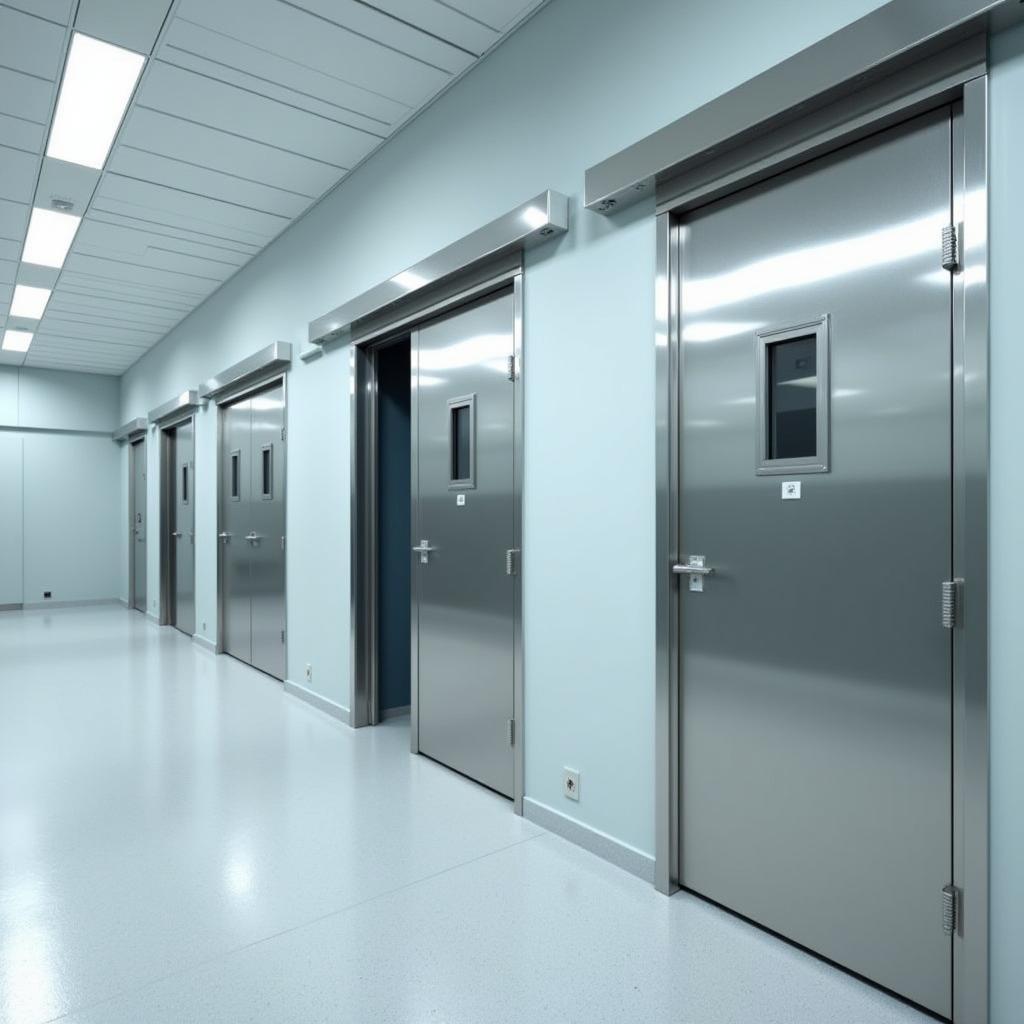The term “Cell Door” often conjures up images of gritty prison cells in movies and TV shows. But beyond fictional narratives, cell doors play a crucial role in maintaining security and order in various real-world settings. From correctional facilities to research labs, understanding the nuances of cell doors unveils a world of intricate mechanisms, evolving technologies, and critical considerations for safety and functionality.
Beyond Bars: The Diverse World of Cell Doors
While the image of a heavy steel door with a small barred window might be the most common, the reality is far more diverse. Cell doors come in various materials, designs, and security levels, tailored to specific needs and environments. Let’s explore some of the most prevalent types:
- Steel Cell Doors: The workhorse of high-security environments, these doors boast robust construction and tamper-resistant features. They often incorporate reinforced frames, multiple locking mechanisms, and specialized hardware to withstand attempted breaches.
- Sliding Cell Doors: Ideal for facilities where space is limited, these doors slide open and closed, maximizing cell area. They utilize heavy-duty tracks and rollers, ensuring smooth operation even with substantial weight.
- Security Glass Doors: Transparency meets security with these doors, allowing for observation while maintaining a secure barrier. They are commonly found in settings requiring visual monitoring, such as psychiatric wards or holding cells.
 Modern Sliding Cell Doors
Modern Sliding Cell Doors
Key Considerations in Cell Door Design and Implementation
Designing and installing a cell door is a complex process that goes beyond mere aesthetics. Several critical factors come into play:
- Security Level: The level of security required dictates the type of door, materials used, and locking mechanisms employed. High-security facilities housing dangerous individuals necessitate robust doors with sophisticated locking systems, while lower-security settings may opt for simpler designs.
- Durability: Cell doors must withstand constant use, potential tampering attempts, and the rigors of a demanding environment. Selecting durable materials like heavy-gauge steel and tamper-resistant hardware is essential.
- Safety: Beyond security, cell doors must prioritize the safety of both inmates and staff. Features like vision panels for observation, emergency release mechanisms, and fire-resistant construction are crucial safety considerations.
The Evolution of Cell Door Technology
Like many aspects of security, cell door technology is constantly evolving. Modern cell doors incorporate advanced features such as:
- Electronic Locking Systems: Replacing traditional keys and levers, electronic locks offer enhanced security and control. These systems can be integrated with access control platforms, allowing for remote operation, audit trails, and customized access permissions.
- Biometric Authentication: Adding an extra layer of security, some facilities are adopting biometric technologies like fingerprint or iris scanners for cell door access control. These systems provide highly secure and reliable identification, minimizing unauthorized access risks.
- Remote Monitoring and Control: Centralized control systems enable remote monitoring of cell doors, providing real-time status updates and alerts. These systems enhance situational awareness and facilitate rapid response in case of security breaches or emergencies.
 Cell Door Control Panel
Cell Door Control Panel
Beyond the Confines: Cell Doors in Unexpected Places
While often associated with prisons, cell doors find applications in diverse settings, including:
- Research Facilities: Laboratories handling hazardous materials or conducting sensitive experiments utilize specialized cell doors to contain potential risks and protect personnel.
- Psychiatric Hospitals: Secure wards in psychiatric hospitals employ cell doors to ensure patient and staff safety while providing a controlled environment for treatment.
- Animal Control Centers: Some animal shelters use cell doors to separate aggressive animals or those undergoing medical treatment, ensuring the well-being of both animals and staff.
FAQs about Cell Doors
What are the standard sizes of cell doors?
Cell door dimensions vary depending on the facility’s design and regulations. However, common widths range from 30 to 36 inches, with heights typically around 7 feet.
How much do cell doors cost?
The price of a cell door hinges on factors like material, size, security features, and customization options. Basic steel doors might start around $1,000, while high-security doors with advanced features can cost tens of thousands of dollars.
Need More Information?
For those seeking to delve deeper into specific types of doors, our website offers a wealth of resources. You can find detailed information on sliding wood slat doors, outdoor flooring options, and even spiral garden stakes.
Let Us Help You Find the Right Solution
Whether you require a robust steel door for a high-security facility or a transparent option for observation purposes, understanding the nuances of cell doors is paramount. By carefully considering your specific needs, security requirements, and budget, you can select the ideal solution to maintain safety, order, and functionality within your facility.
For any inquiries or assistance in choosing the right cell door for your needs, our dedicated team at VNG Game is here to help. Contact us at 0902476650 or [email protected], or visit our office at 139 Đ. Võ Văn Kiệt, Hoà Long, Bà Rịa, Bà Rịa – Vũng Tàu, Việt Nam. We are available 24/7 to provide you with the best support and guidance.





